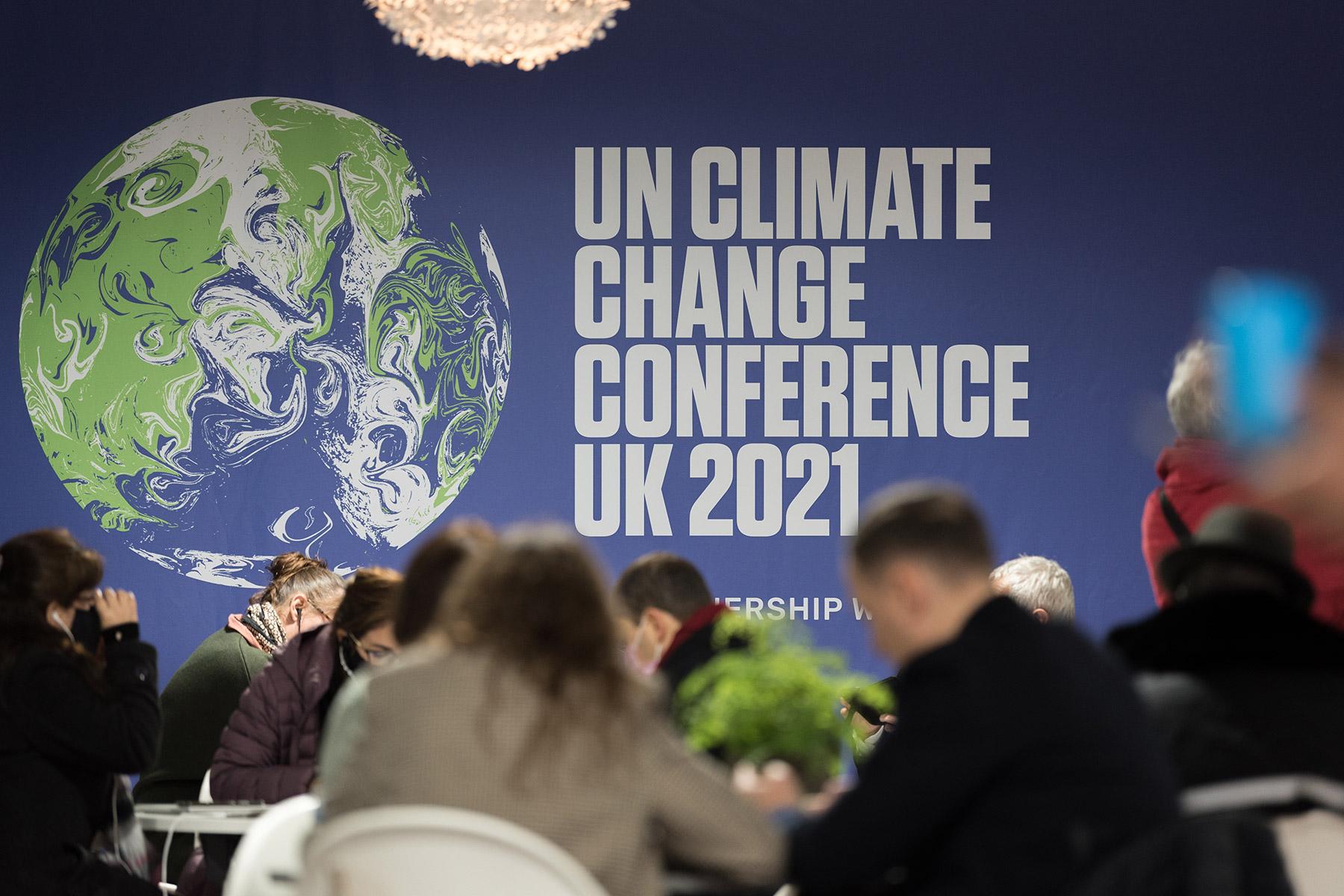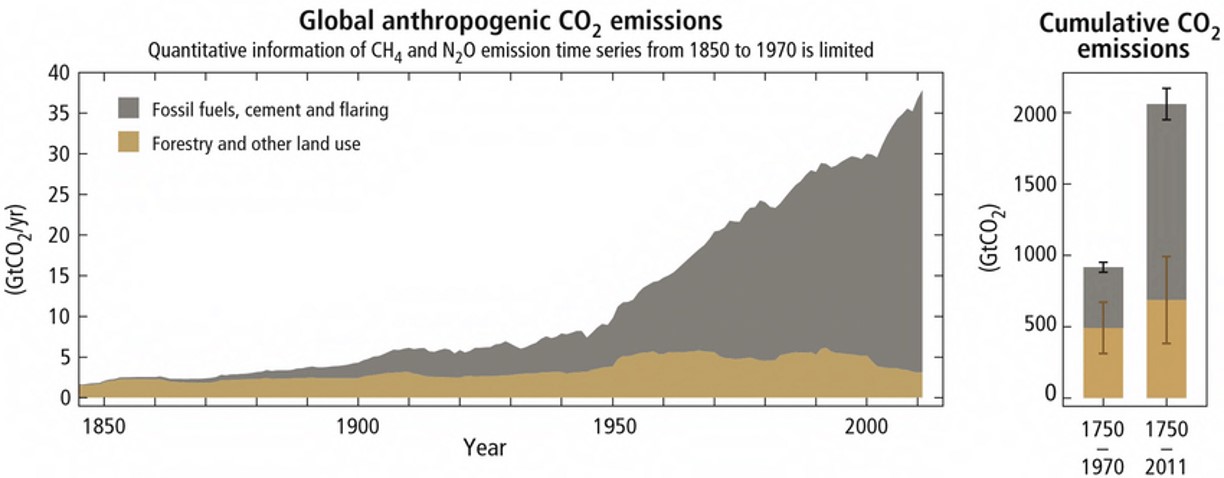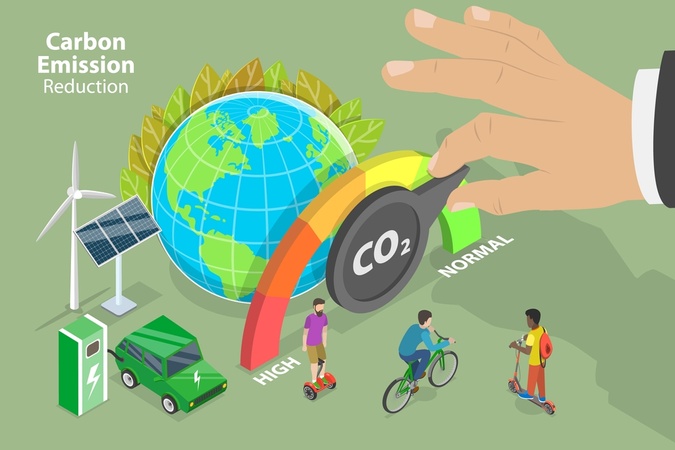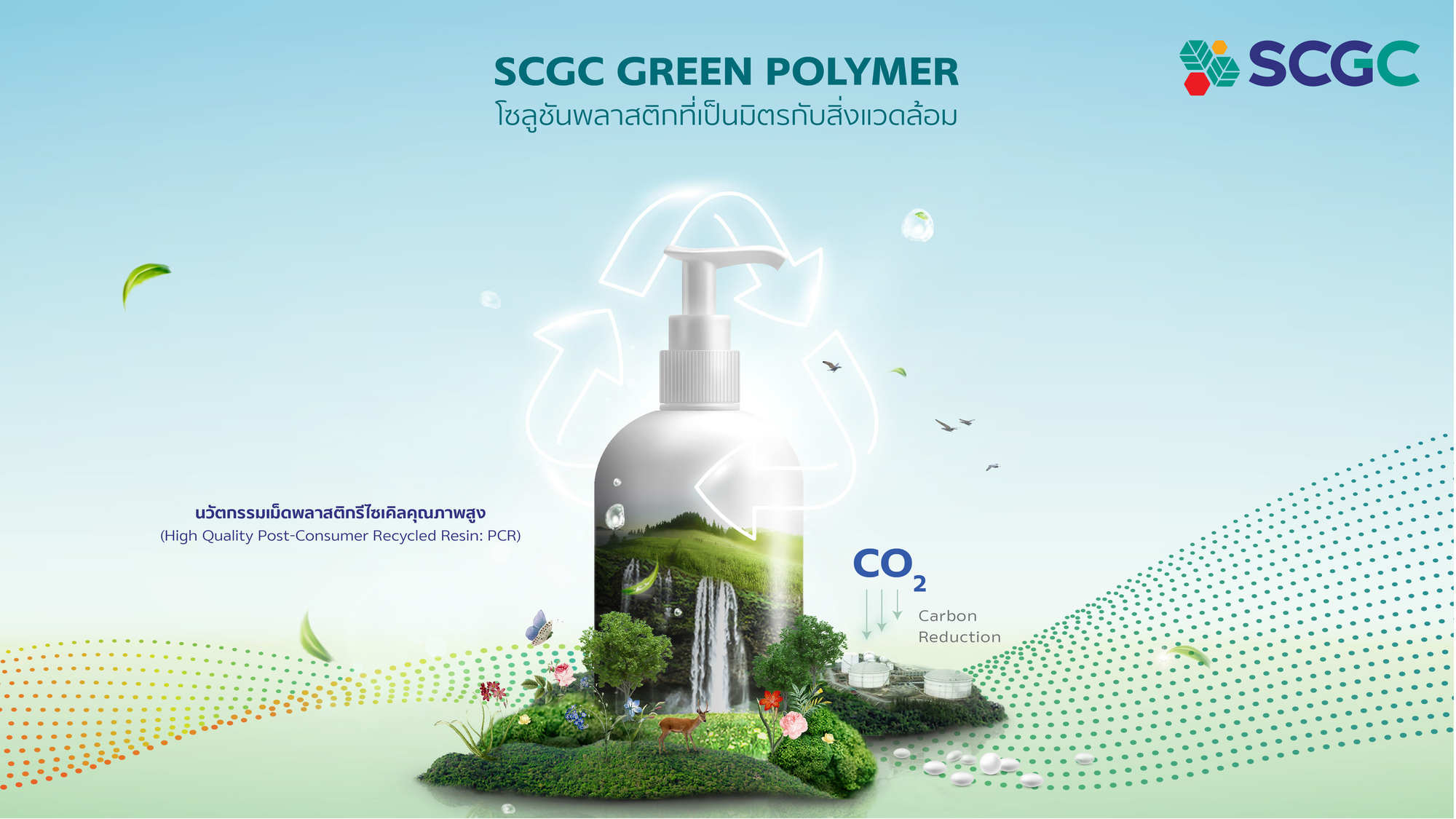Beyond the many new norms that emerged following the advent of COVID-19, the changing weather patterns in recent times, such as higher temperatures, unseasonal rainfall, and increasingly frequent severe weather events, have also been a subject of discussion in society.
"This is because climate change is a consequence of human activities leading to an increased amount of greenhouse gases in the atmosphere. This intensifies the greenhouse effect more than what should naturally occur, resulting in a rise in the Earth's surface temperature, known as global warming, the impacts of which we are still unable to mitigate in the near future."
However, the governments of many countries, experts, and leading companies worldwide are seeking ways to mitigate the impacts and slow down the severity of this phenomenon. They are also collaborating on long-term plans to sustainably address this issue.
----------------------------------------------------------------------------------------------------------------------------------------
Recommended Content:
✓ SCGC Sustainability Report 2022
✓ Industrial Pipes and Innovative Chemical Solutions
✓ Sustainability Trend: The Trend of the Year that Consumers Are Ready to Support
----------------------------------------------------------------------------------------------------------------------------------------
The Past Of CO₂ Before It Became A Global Threat
Climate change refers to long-term shifts in temperature and weather patterns. These changes can naturally occur, but since the 1800s, they have mostly resulted from human activities. The main causes stem from burning fossil fuels (such as coal, oil, and gas), deforestation, and industrial livestock farming, which lead to the production of greenhouse gases, especially carbon dioxide (CO₂). These activities are primarily responsible for the accumulation of heat energy in the atmosphere, leading to severe damage to the Earth's natural mechanisms and, ultimately, to our very existence.
These challenges have brought about global climate meetings, the first of which took place in Berlin, Germany, in 1995.
Over three decades, the Conference of Parties, or COP, has held meetings among member states of various multilateral agreements under the United Nations. The most well-known COP is the United Nations Framework Convention on Climate Change (UNFCCC). The most recent conference was COP27, held in Sharm El Sheikh, Egypt, from 6-18 November 2022. This meeting focused on an agreement on establishing a fund to compensate for "loss and damage" resulting from global warming and disasters caused by escalating climate change. Prior to that, COP26 was held in Glasgow, Scotland, from 31 October to 12 November 2021. The key takeaway from the conference was the need to achieve a net-zero greenhouse gas emission by 2050 to tackle global warming.

Nevertheless, the issue mentioned above continues to pose a significant challenge to humanity. Despite the efforts of all sectors to reduce greenhouse gas emissions over the past few years, it has not been sufficient to achieve the target set out in the Paris Agreement six years ago (COP21). That is to maintain the global average temperature rise below 2 degrees Celsius compared to pre-industrial revolution times and to aim for a 1.5 degrees Celsius target. Studies by climate scientists regarding global temperature anomalies show that the current average global temperature has increased by approximately 1 degree Celsius compared to the baseline temperature (an average of 13.9 degrees Celsius from 1981-2010).
Carbon dioxide (CO2), along with methane (CH4), nitrous oxide (N2O), hydrofluorocarbons (HFCs), perfluorocarbons (PFCs), sulfur hexafluoride (SF6), and nitrogen trifluoride (NF3), is one of the greenhouse gases prevalent in the atmosphere. It is used in the photosynthesis process of plants, algae, phytoplankton, and bacteria to produce sugar and food. It is also released into the atmosphere through the respiration of plants, animals, and living organisms. Moreover, a natural, balanced amount of CO2 and other greenhouse gases helps to absorb heat from the sun, maintaining the earth's temperature conducive to the growth of life.
However, in the past few centuries, the combustion of these fuels in transportation, manufacturing, factories, and industries has led to a massive release of carbon dioxide and other greenhouse gases into the earth's atmosphere. This has disrupted a natural balance maintained for billions of years, resulting in the atmosphere retaining more heat, rapidly increasing global average temperature many times faster than in the past, and causing numerous environmental issues, including climate change and global warming.
A report from Climate Watch indicates that in 2011, global carbon dioxide emissions reached 32,274 million tons of carbon dioxide (MtCO2), vastly exceeding the measured amount of 198 million tons of carbon dioxide (MtCO2) in 1850, a staggering 150-fold difference! According to statistics from the Intergovernmental Panel on Climate Change (IPCC), an important piece of data to consider is that as the volume of human-caused greenhouse gas emissions increases, the concentration of greenhouse gases in the world and the abnormal increase in global temperatures rise in the same direction. This correlation has been seen from 1900 onwards, providing compelling scientific evidence that global warming is indeed a reality.

Unraveling The Complexity Of Buzzwords About CO₂
Amidst the surge of effort from all sides seeking to invent and develop solutions to mitigate global climate change, new vocabularies related to this phenomenon are emerging from experts and continuously being reiterated across various media platforms. Therefore, fostering familiarity and understanding of these terms is vital. Through this article, SCGC aims to present the definitions and explanations of a glossary of terms related to climate change, global warming, and the key role of carbon dioxide (CO2) emissions in these phenomena.
In the COP26 conference, or the UN Climate Change Conference held in Glasgow, United Kingdom, Thailand also declared its intention to achieve “carbon neutrality” by 2050 and to reach "net zero emissions" by 2065. But what do these two buzzwords mean? The term “carbon neutrality,” selected as the word of the year by the New Oxford American Dictionary in 2006, implies a situation where the amount of carbon released into the atmosphere equals the amount of carbon reabsorbed through forests or other methods. Achieving this goal could be pursued on personal, organizational, or national levels by reducing and offsetting carbon emissions until the balance is achieved. The term “net zero emissions” refers to a situation where the amount of greenhouse gases released is balanced by the amount absorbed from the atmosphere. Achieving this state means not allowing the increase of greenhouse gases in the atmosphere. This can be done by reducing the emission of greenhouse gases or by removing an equivalent amount of these gases.
Both buzzwords, net zero emissions and carbon neutrality, have similar meanings. However, the latter extends beyond just the carbon emissions, taking into account all the greenhouse gases that contribute to global warming (the three main ones being carbon dioxide (CO2), methane (CH4), and nitrous oxide (N2O)). Thus, achieving carbon neutrality is a stepping stone towards reaching net zero emissions. Furthermore, net zero emissions is a goal set at a national level, or in the case of organizations, the target is to have zero net emissions throughout the entire production chain, from upstream to downstream. Therefore, this is a more challenging goal than achieving carbon neutrality.
The terms Carbon Negative and "Climate Positive" feature prominently within the context of climate change, global warming, and greenhouse gas emissions, specifically carbon dioxide (CO2). The phrase "Carbon Negative" describes a situation where the amount of greenhouse gases absorbed or stored exceeds the amount released into the atmosphere. For instance, Bhutan and Suriname in Latin America have achieved this goal, boasting dense forests covering more than 70% of their land area. These nations also strictly enforce laws protecting these green spaces. On the other hand, Climate Positive refers to reducing or eliminating all greenhouse gas emissions within the supply chain, coupled with promoting the use of clean energy. IKEA, the Swedish furniture giant, is a prime example of this concept. The company encourages households to switch to and access electricity from renewable energy sources such as solar and wind power at affordable prices. At the same time, IKEA strives to reduce greenhouse gas emissions from its entire production process by half by 2030.

The last crucial term related to climate change, global warming, and greenhouse gases like carbon dioxide (CO2) is Carbon Offset. First mentioned in 1989, or roughly three decades ago, this term emerged from agroforestry practices in Guatemala. It refers to the process of extracting accumulated greenhouse gases from the atmosphere to counterbalance emissions, essentially creating a good to offset the harm done by pollution.
Current Efforts and Future Directions to Reduce CO2
The International Energy Agency's (IEA) 2022 report indicated a 0.9% increase in global energy sector greenhouse gas emissions, equivalent to an additional 321 million tons in 2022. This surge led to an unprecedented accumulation of carbon dioxide, surpassing 36.8 million tons.
The principal goal of the Paris Agreement demands each country strive to limit the global average temperature increase to 1.5 degrees Celsius. Despite several countries struggling to achieve this, COP27 saw many nations express intentions to intensify this aim. This includes reducing the use of all types of fossil fuels, not just coal. The summit also laid out a plan to tackle the climate change crisis, emphasizing an increased urgency to address the effects of the climate crisis over this decade. A major component of this plan is establishing the Loss and Damage Finance Fund, which will be crucial in maintaining climate justice.
Thailand has adhered to its pledge made during COP26, submitting its revised edition of the long-term strategy for the nation's low greenhouse gas emission development, in line with its goal to achieve carbon neutrality by 2050. The country aims to reduce its greenhouse gas emissions from a peak of 388 million tons per year to just 120 million tons per year. This reduction is intended to achieve net zero emissions by 2065. Additionally, Thailand has set a goal to increase its nationally determined contributions (NDCs) to a 40% reduction in greenhouse gas emissions by 2030, provided international support exists.
SCG Chemicals, or SCGC, a leader in a leading integrated chemical player in ASEAN for sustainability, with over 40 years of experience, is the only producer operating robustly in Thailand, Indonesia, and Vietnam, the largest economies in the ASEAN region. SCGC prioritizes sustainability in its business operations, particularly in regard to climate change, global warming, and carbon dioxide greenhouse gases. Significant initiatives that SCGC promotes and supports can be summarized as follows:
- SCGC operates its business according to the ESG (Environmental, Social, and Governance) principles, emphasizing the efficient use of resources in line with the circular economy, reducing environmental impact, and innovating for sustainability.
- It aims for carbon neutrality by 2050, with a goal to reduce greenhouse gas emissions by 20% of the 2021 base year by 2030 with the "Low Carbon Low Waste" direction. SCGC has set three approaches for its operations:
- Decarbonization by increasing energy efficiency, increasing the proportion of renewable energy, using carbon credits, and carbon sequestration;
- Adopting low carbon supply chain by collaborating with partners in the value chain, promoting the reduction of product carbon footprint throughout the value chain, reducing reliance on fossil raw materials, increasing the proportion of recycled raw materials, reducing external water use, reducing waste, and reducing air pollution;
- Product portfolio adjustment by developing low-carbon products throughout the product lifecycle. SCGC has products certified under SCG Green Choice in the energy-saving category and promotes carbon footprint certification. In 2022, SCGC and its subsidiaries have all obtained Carbon Footprint for Organization (CFO) certification.

- SCGC has innovated and developed Green Innovations. The highlight is the environmentally friendly Green Polymer, an innovation that addresses the issue of low carbon emissions. We aim to push for an increase in the overall sales volume of such solutions to 1 million tons per year by 2030.
- SCGC's Green Polymer encompasses four aspects of solutions, namely: (1) Reduce: This aspect involves the reduction in resource usage. Using the SMX™ technology, we can produce stronger plastic resins that allow for thinner products while maintaining the same strength, hence decreasing the need for plastic resources; (2) Recyclable: We design for recyclability, developing Mono-material solutions for packaging that can be effectively recycled; (3) Recycle: This is about recycling. We developed high-quality Post-Consumer Recycled Resin (PCR) from the mechanical recycling process and certified circular resin from the advanced recycling process; (4) Renewable: We ensure biodegradability and use of renewable resources by developing plastic resins that are bio-compostable compound resin suitable for molding and production into biodegradable bags.
- Furthermore, SCGC has collaborated with Braskem to study the feasibility of producing bio-based polyethylene from agricultural byproducts, another way of utilizing renewable resources.
- We continually develop solutions for society. Notable projects include promoting community waste recycling through the KoomKah web application. This tool manages data to enhance the efficiency of waste banks and promote increased waste separation in communities. The membership base has expanded to over 15,000, with 330 waste banks in the network, and has sorted over 5,300 tons of recyclable waste. This amounts to a reduction of 4,487 tons of carbon dioxide equivalent (data as of May 2020).
- Our leading project, "KoomKah x Unilever - Plastic Sorting for the Better" (Yak Dee Mee Tae Dai)," achieved its goal of sorting over 6,000 kilograms of used household plastic within a year at the New Bang Bua Thong Municipality in Nonthaburi Province. This reduced the release of over 5,750 kilograms of carbon dioxide equivalent and engaged over 17,000 community members while generating additional income of more than 49,970 baht for the community.
- In the past year, SCGC has planted over 18,000 terrestrial trees within and outside the factory area, including 2,500 mangrove trees, absorbing 369 tons of carbon dioxide equivalent yearly.
- Recently, SCGC has partnered with Avantium N.V., a leading technology provider in renewable chemistry from Netherlands, and IHI, a leading Japanese company specializing in machinery production for power plants and construction industries, to put further efforts in Carbon Capture and Use (CCU) Technologies.
------------------------------------------------------------------------------------------------------------------------------------------
Download SCGC Sustainability Report here.
------------------------------------------------------------------------------------------------------------------------------------------
SCGC, or SCG Chemicals, continues to relentlessly develop chemical innovations that cater to sustainability for all sectors. It is clear that our development direction is one of the solutions to the challenges of climate change, global warming, and greenhouse gases, with carbon dioxide being a major factor. However, it is increasingly clear that collaboration in addressing environmental issues in this context is extremely necessary, and SCGC would like to be a driving force toward sustainable solutions.
________________________________
Sources:
Photo credit:










